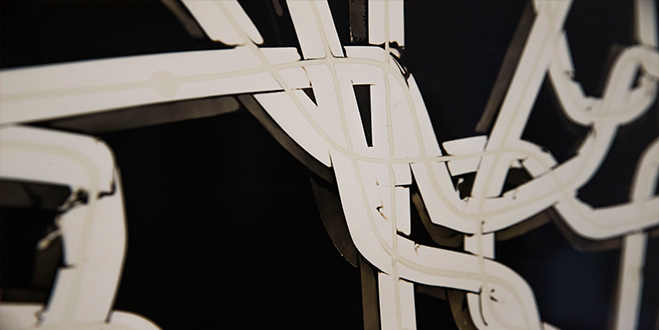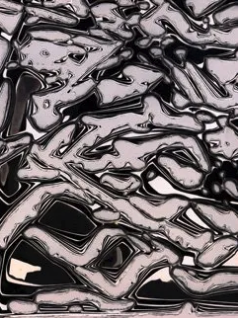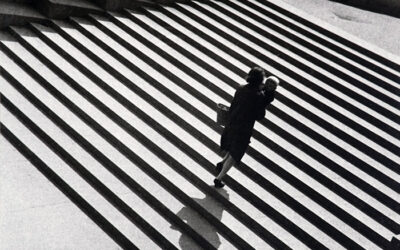El quimigrama segun su creador, Pierre Cordier

1- The chemigram is not a photograph
“Photo-graphy” means “writing with light”. However, the chemigram is made in full light. How can one write with light on a support that it has already compleetely touched ? The chemigram is not a “writing of light”, but a “writing of chemistry”, since the writers are the developer and the fixer.
2- The chemigram is not a photogram
Like the photogram, the chemigram is made without a camera (“cameraless”) and without lens (“lensless”). The photogram is a technique where light writes, as in photography. However, in the chemigram, chemistry writes, light does not. This means that the chemigram should be classified in a specific category, and should not be annexed to the photogram as some historians have done.
3- The chemigram is not exclusively chemical
As the word “chemigram” is derived from “chemistry”, several critics and historians believe that the forms of the chemigrams are exclusively obtained through chemistry, and are unaware of the use of localizing products. These products come into the manufacture of paints (varnishes, waxes, oils), and endure non chemical but “physical” transformations ‘coming unstuck, cracks, erosion, dissolution, etc.). The chemigram is more precisely a “physico-chemical” technique. It is possible to obtain chemigrams by only leaving the developer and the fixer to act on the photosensitive emulsion.
4- Localising products are not rare
They are innumerable : anything that can adhere a few moments onto photographic paper can create a chemigram. Localizing products can be found in a kitchen, a bathroom, or in a paint shop.
5- The chemigram does not use rare chemical products
Some authors feel that the complex forms of the chemigram can only be obtained with rare products such as those used in engraving or even, alchemy. However, theses products are simply the same as those used in silver gelatinobromide photography : photosensitive emulsions, developer and fixer.
6- The chemigram can be either random or controlled
The practitioner of the chemigram is confronted with diferent sorts of chance (uncontrolled, uncontrollable), but the chance is also something that he can control and program, and is often its best collaborator.
7- There is no need for an “O” in the word “chemigram”
When I invented the word in 1958, therapeutic techniques whose name begin with the same four letters were not yet known.
8- Perhaps the pejorative connotation of the word “chemistry” affects the word “chemigram”
Too often, the word “chemistry” is used when refering to pollution, poisoned food, etc. I try my best to meet with scientists, industrialists, and journalists, all of whom want to rehabilitate this word, which also happens to be the basis for everything that exists on earth. It is interesting to note that the word “physics” does not meet the same fate. Hopefully, the chemigram gives us a better idea of what can be done with chemistry.
9- The technique is important
Apart from a few exceptions, art specialists have shown very little interest in the technique. However, technique creates new languages : photography, cinema, and computer. “It is the in-depth study of the technical way in which a work is made that allows understanding it fully…” (Anthea Callen, Les peintres impressionnistes et leur technique, Art & Images, Paris, 2006).
10- Pierre Cordier is not the only practitioner of the chemigram
Some historians of contemporary photography know very little about the history of alternative photographic processes and think, (or hope ?) that the chemigram will disappear with its inventor. This is an aberration. Not only were there a few artists before him who practiced similar techniques, but there have also been many others since 1956. The chemigram is now part of the family of the photograms, pinhole cameras, cliché-verre, etc. It is the subject of seminars, workshops, exhibitions, etc. One need only surf on the internet to verify this (click here).We ca also note that the word has often been used a posteriori to designate earlier experiences. This is what the French philosopher Hubert Damisch qualifies as an “anachronism”. The book on the chemigram’s history still need to be written
http://www.pierrecordier.com/







Comentarios recientes